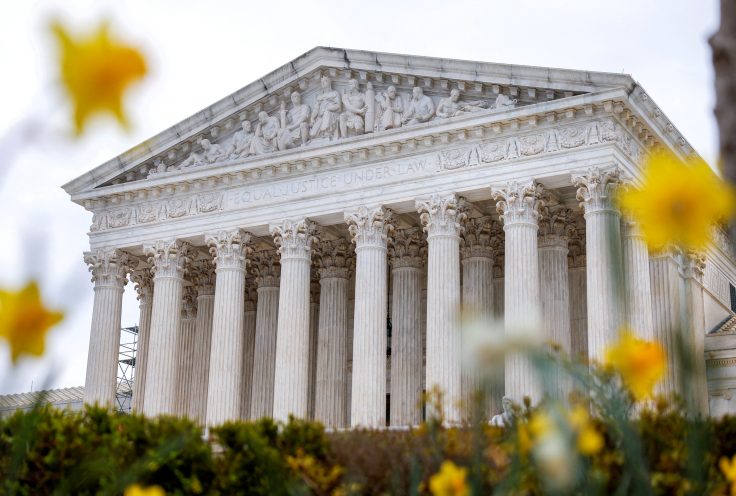The U.S. Supreme Court's decision to strike down President Joe Biden's student debt relief would claw back more than $300 billion in costs associated with the program that were recognized last year, marking a major reduction in this year's deficit—at least on paper.
The court ruled 6-3 on Friday that Biden's unilateral decision to offer up to $10,000 to $20,000 in one-time student debt forgiveness to couples earning up to $250,000 had circumvented Congress' constitutional right to make laws on spending. The debt relief program had been blocked by the legal challenges that led to the Supreme Court's decision.
The Department of Education had estimated that the debt relief would cost taxpayers about $30 billion annually over the next decade through foregone loan repayments - about $2.5 billion per month - or about $305 billion in total. The Department estimated the net present value of the loan forgiveness at $379 billion over a decade.
The U.S. Treasury last year took a $430 billion charge against fiscal 2022 budget results to cover these costs as well as an extension of the general COVID-19 moratorium on payments through the end of 2022. The move had the effect of limiting a dramatic reduction in the fiscal 2022 deficit to $1.375 trillion from $2.775 trillion the prior year.
Without the advance recognition, the deficit would have fallen below $1 trillion as COVID relief programs ended and revenues surged.
Marc Goldwein, senior policy director for the Committee for a Responsible Federal Budget (CRFB), a fiscal watchdog group, estimated that about $320 billion of the pre-emptive costs would be reversed during fiscal 2023 after the Supreme Court ruling.
The Congressional Budget Office is forecasting an increased deficit of $1.539 trillion this year due to falling revenues and higher spending and healthcare costs. A reversal of more than $300 billion would make it appear that this year's fiscal deficit fell slightly from 2022.
"It's deficit reduction relative to a deficit increase that never really went into effect," Goldwein said. Biden "announced the policy and they weirdly recorded it as having increased the deficit before they implemented the policy in any meaningful way."
The smaller reversal relative to the $380 billion initial cost estimate is due to a recent expansion of income-driven repayment relief, which will cut undergraduate loan repayments by half for many borrowers and drop them to zero for those in a family of four earning less than $62,400.
Many borrowers who would have seen loans forgiven under Biden's plan will now benefit from the more generous income-driven repayment scheme instead, Goldwein said.
The cash flow impact of the Supreme Court ruling will be minimal, perhaps adding back about $2 billion in receipts per month that would have been lost had the forgiveness plan been upheld.
Shai Akabas, economic policy director at the Bipartisan Policy Center, said another reason the deficit reduction resulting from the ruling would be lower than the initial cost recognition was because the general student loan repayment moratorium was extended well into calendar 2023 by the Biden administration.
The debt ceiling legislation earlier this month prohibited any further extensions, and the Department of Education has said that repayments will resume in October. This will take hundreds of dollars a month out of millions of consumers' pockets and create new headwinds for the U.S. economy, economists say.
(Reporting by David Lawder; Editing by Andrea Ricci)
